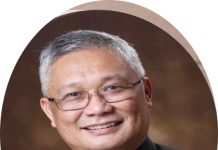The Abuyog Community College (ACC) is a local government unit-sponsored college under the sponsorship of the Sangguniang Bayan of Abuyog, Leyte, Philippines, which started its operation in 1979.
To facilitate the progress of the college, on October 19, 2004, Resolution No. 245 series of 2004 was passed by the Sangguniang Bayan of Abuyog requesting the local chief executive the Hon. Mayor Ofelia K. Traya, to reactivate, reorganize, and make operative the Board of Trustees of the Abuyog Community College. To this effect, Resolution No. 3, series of 2005 confirmed the appointment of the new Board of Trustees of the college as the governing body of the school. Under the new management, the college began to grow and widen its horizon in education.
Today, the Abuyog Community College offers the following courses: Bachelor of Science in Criminology (BSC); Bachelor of Science in Hotel Management (BSHM); Bachelor of Science in Entrepreneurship (BSE); Bachelor of Science in Information Technology (BSIT); Bachelor in Elementary Education (BEED); Bachelor in Secondary Education (BSED); and Associate in Computer Technology (ACT). It also offers the senior high school education.
With its almost 4,000 enrollees during the first semester of school year 2023 and around 100 teachers, the writer would like to share his reflection in the classroom where his students are motivated and eager to learn.
The “eclectic teaching approach” or the combination of all teaching strategies that the writer is used to do for a period of 15 years in his teaching profession proved to be very effective because it stimulates the development of creativity, flexibility, and instils in self-confidence of the learners. People need flexibility of the mind to exist in it.
An eclectic approach to pedagogy is one of the most effective ways of teaching. It allows the teacher to select and combine various techniques, giving them the harmony of the system.
What does the writer do in his eclectic teaching approach? During the first day in his class, a diagnostic test is given to his/her students in order to know how far the knowledge, skills, and abilities his students have on a particular subject. It gives him the idea what still needs to be done on the subject.
This is followed by the “knowing each other” activity, where the teacher first introduces himself to students and later the students introduce themselves to the class. The self-introduction follows this format: state your complete name, year, program enrolled, motto in life, who choose your course or future career, what are your future plans, who support your studies, and what are your learning styles? This is the writer’s way of first diagnosing what type of learners he has in the classroom.
In the course of every lesson, he always applies outcome-based education (OBE) by way of group activities, where the teacher acts only as the director or facilitator of learning, and the students are always the starring in the classroom. As a result, all students (including the shy ones) became participative and well appreciated all the learning activities given to them, and they are always eager to learn. (BY: DR. TEOFILO O. MONTALLANA, (The author is a Professor at Abuyog Community College, Abuyog, Leyte).



